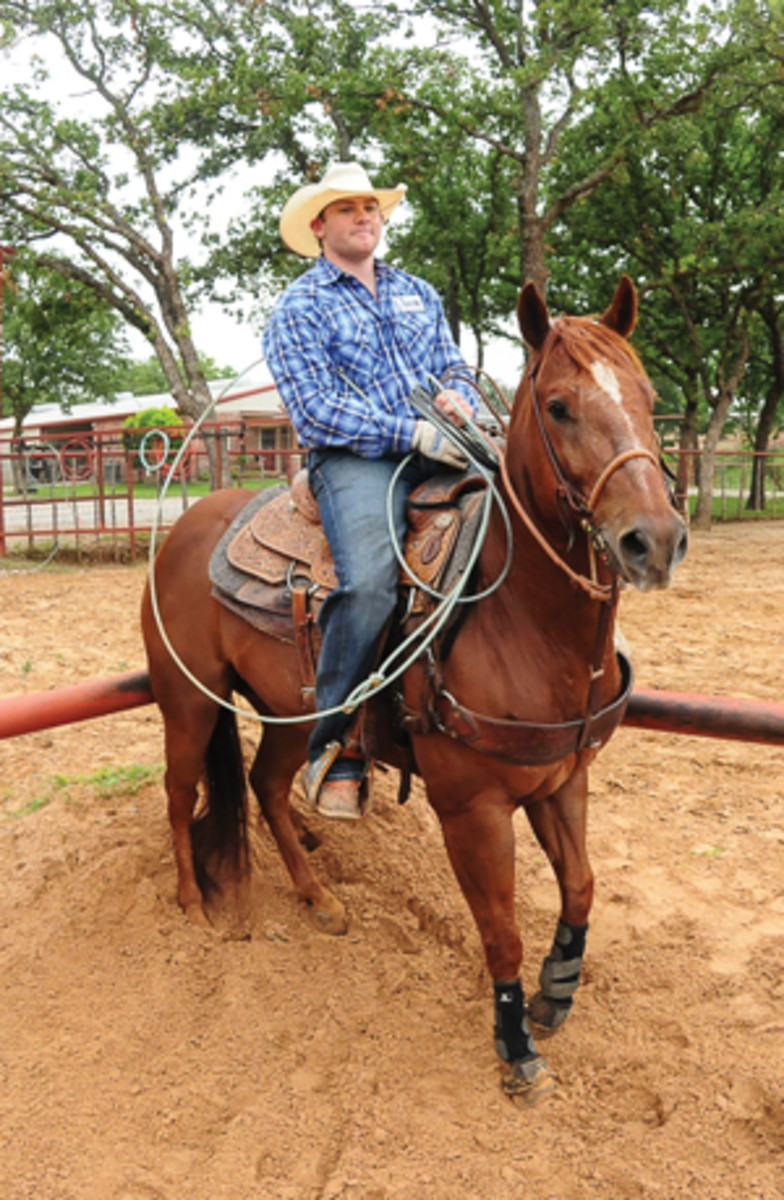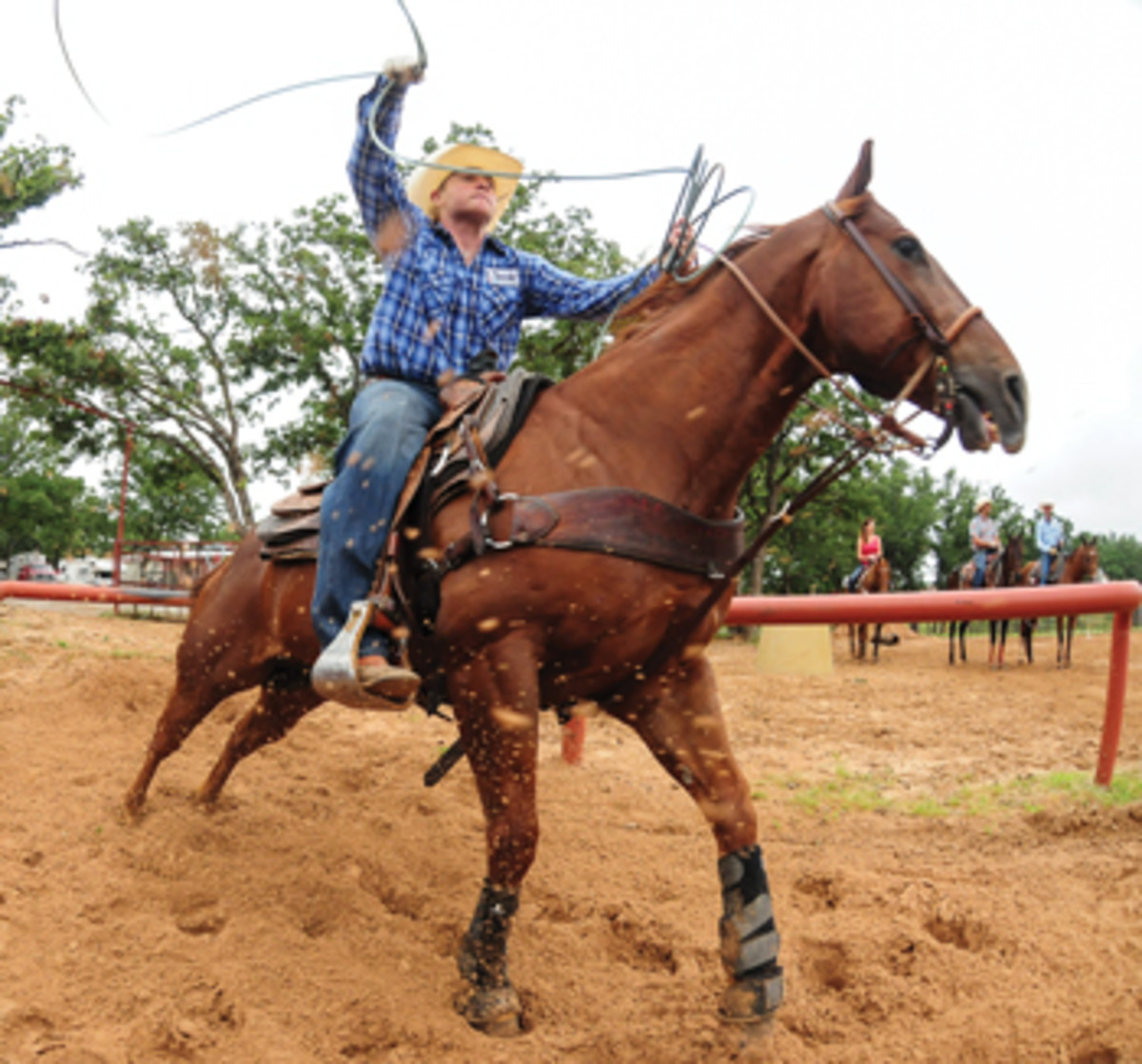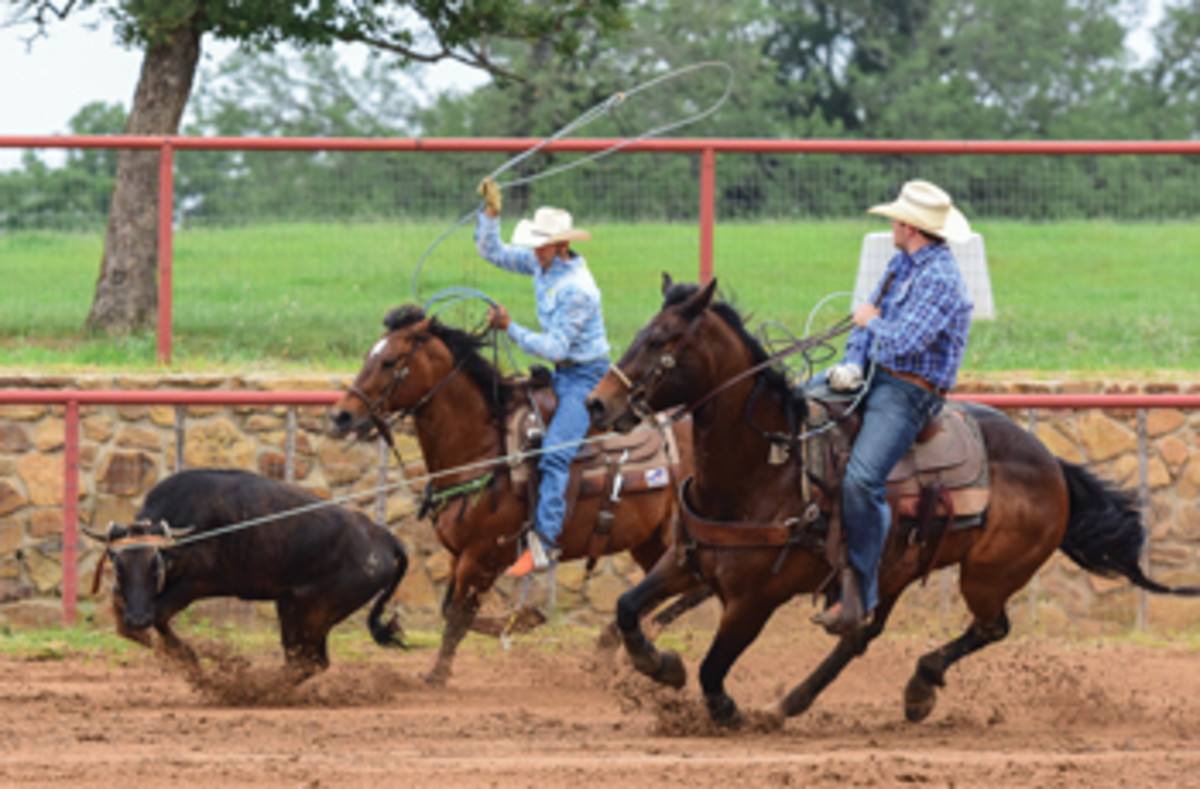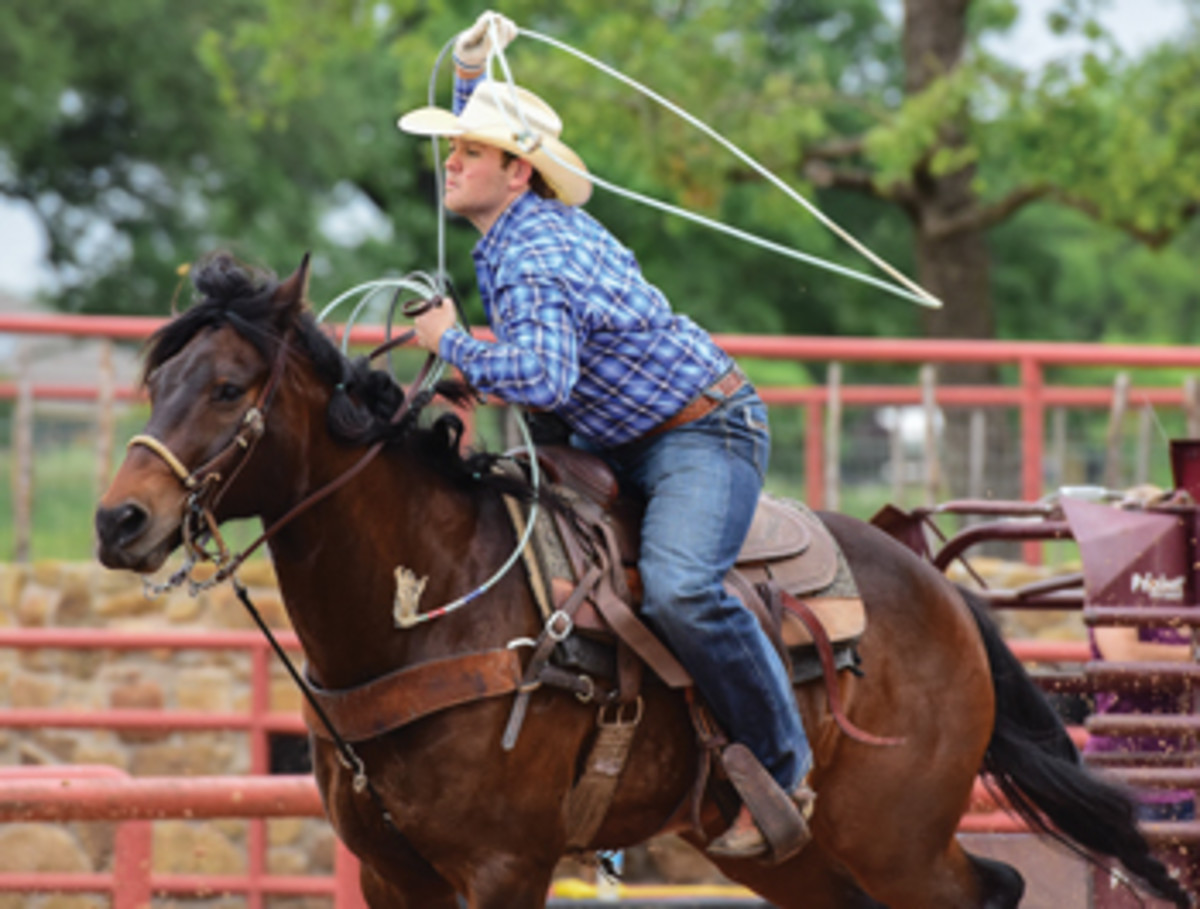I’ve always ridden short-strided head horses, and the traditional wisdom is that a short-strided horse is really the most ideal. But I’ve been able to get along with both, and right now I’ve got a long-strided horse in my rig that I’m having some success riding. It takes some adjustments—in both my swing and my strategy—but ultimately riding a long-strided horse can make my job easier in certain set ups and take away the need to reach.
1. I grew up riding dozens and dozens of different horses at my parents’ place, so I had to learn to make adjustments without thinking about it too much. If you’ve ridden enough and you’re versatile enough, switching between a short-strided horse and a long-strided horse isn’t that big of a deal.

2. Short-strided horses are easier because they stay flat, and they stay in time with your swing. It’s easy to get your rope up and hustling in time with your short-strided horse’s feet. They’re flatter, so when you’re coming across the line looking for a throw, the horse’s head is not in your way and you can take your first shot. At the short scores like The American and The Strait, I love short-strided horses because as soon as my rope hits the steer’s head I can get left and get that steer moving for my heeler. A short-strided horse’s feet are moving faster, so he can have a tendency to duck a little more.

3. It’s funny—a lot of people wouldn’t think of purchasing a long-strided horse. But at Cheyenne or the BFI, it’s a horse race, so I’d like one like this bay that can really run. He is more of a short-range guy’s horse. He’s so fast, and he wants to keep gaining all the way to the steer. Riding him is like cheating at the jackpots because I don’t have to nail the barrier. He’s so fast, I catch up to the steer so much quicker. I don’t have to use my rope as much—I can let him do his job and all I’ve got to do is take an easy shot. I’ve always ridden slower horses and had to use my rope, so riding a longer-strided, faster horse makes it harder to reach because he’s not reading my throw as much. To make that adjustment, he needs to see the throw coming. He needs to see me taking my shot so he can gear down and get his hind end underneath him and start to set the steer up. This just takes time in the practice pen and repetition on live cattle and even the sled.

4. A longer-strided horse can blow you back in your saddle coming out of the box. You’ve got to learn to lean out over the front a touch more so you can keep your shoulders even with the steer’s horns, tip to tip. I stay forward and keep my feet moving so I can keep hustling my rope and hustling my feet and my horse.

5. On a long-strided horse, you have to remember to keep hustling and keep your rope speed up. That can be harder to do because you’re not necessarily moving in time with his feet. His front feet will hit the ground once to a little horse’s two or three times. Sometimes you can catch yourself swinging more slowly to match his stride, but keeping up the quick pace of your swing is crucial to keep your momentum and power. If you can learn to overcome that tendency to slow down your swing, you can get ahead, especially in places where the steers run harder or are scored out farther.









